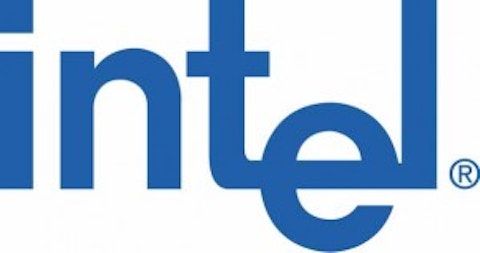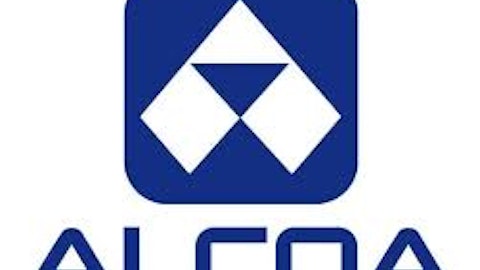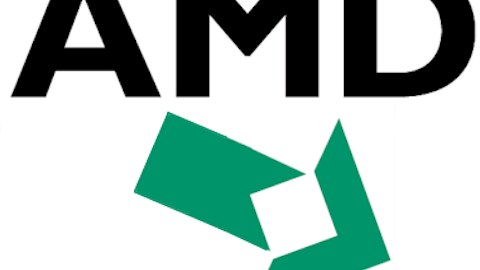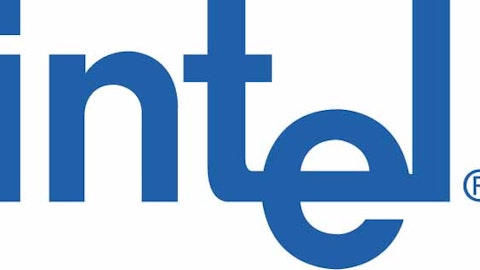At the top of every CIO’s mind when it comes time to upgrade and/or expand hardware in the datacenter, is the simple metric of performance per watt per dollar. That is, these folks want the highest performance that they can get, in the smallest power envelope possible, all for the lowest cost of ownership. In the data-center, Intel Corporation (NASDAQ:INTC) has been the reigning champion of this delicate performance per watt per dollar equation with its well-known Xeon lineup, and has been taking market share from the likes of Advanced Micro Devices, IBM, and Oracle for years now.
The tides set to turn…again?
However, chip IP vendor ARM Holdings plc (ADR) (NASDAQ:ARMH) – one of the most successful growth stories in the semiconductor space over the last few years – has ambitions of enabling a wide set of ecosystem partners to compete in this space. To this end, ARM Holdings plc (ADR) (NASDAQ:ARMH) crafted a new 64-bit instruction set, a bunch of IP including system interconnects and processor cores that it hopes will allow its partners to gain share across the data-center.
While a good deal of optimism has been baked into ARM Holdings plc (ADR) (NASDAQ:ARMH)’s share price on the datacenter opportunity (shares trade for 31 times fiscal year 2014 projected earnings), as well as an equal amount of pessimism in Intel Corporation (NASDAQ:INTC)’s on that same ARM Holdings plc (ADR) (NASDAQ:ARMH) opportunity, I believe that this dynamic may be thrown into question following Intel Corporation (NASDAQ:INTC)’s recent launch of its Atom C2000 processors. Long story short, Intel Corporation (NASDAQ:INTC) is the first out of the gate with a high performance, low power set of highly integrated processors for parts of the data-center (low end networking, storage, and micro-servers), and preliminary performance data suggests that it will be very tough for Intel Corporation (NASDAQ:INTC)’s competitors to come close to matching Intel’s offerings.
Intel’s advantages are numerous
Intel Corporation (NASDAQ:INTC)’s advantages in the server space are formidable, even before we bring the actual merits of the products into the equation. For instance, the vast majority of the software base in the datacenter is designed for Intel Architecture (the formal term for the X86 instruction set), meaning that it costs time and money for datacenter operators to fundamentally switch (rewriting/recompiling software for a new instruction set isn’t easy). On top of that, Intel has significantly deeper relationships with key system partners such as HP and Supermicro, as well as the “roll your own datacenter” companies such as Facebook and Google.
In order to disrupt this type of relationship, an ARM-vendor (such as Applied Micro, AMD, or Calxeda) would need to offer processors that offered significant advantages in performance per watt per dollar. While there has been a lot of buzz surrounding the potential power efficiency of ARM Holdings plc (ADR) (NASDAQ:ARMH) products, the truth of the matter is that there is very little (if any) inherent “advantage” for either the X86 or ARM instruction sets – they’re just specifications. What determines power efficiency is the transistor technology upon which the chip is built and the quality of the actual design – two areas in which Intel holds very clear advantages over its competitors.
The first – transistor technology – is an area in which Intel has a well-known lead in the industry. Chips are made of transistors, and if a company can make them smaller, faster, and more cheaply than the other players in the industry (the majority of whom are tied to external foundries like Taiwan Semiconductor or Global Foundries), then that company will have a real advantage out of the gate on performance/watt and potentially performance/dollar given equal design resources.
However, Intel brings to the table massive design resources that are leveraged across multiple, highly profitable business units. For example, the processor core designs, process technology development, and even the development of other IP blocks are amortized over millions of units that generate billions of dollars in revenue. In addition, since Intel runs its own manufacturing facilities, it is able to really co-optimize its process technology and its processors. Don’t just take my word for it; preliminary performance tests (admittedly from Intel) suggest that those R&D dollars have been very well spent:
Intel’s datacenter lead seems safe
All told, I believe that Intel anticipated the potential threat from ARM Holdings plc (ADR) (NASDAQ:ARMH) and its partners in the datacenter, which is in stark contrast to what happened in the tablet/smartphone space in which the chip giant is playing catch-up. In order to break the many hurdles to entry into the server space, ARM and its partners will need to offer a product that offers significant performance per watt per dollar advantages over its Intel peers. I don’t believe that this is likely to happen anytime soon, and as a result believe that the optimism for the ARM camp and the pessimism for the Intel camp may be overdone for the foreseeable future.
The article Intel Beats ARM to the Server Punch With Avoton originally appeared on Fool.com and is written by Ashraf Eassa.
Ashraf Eassa owns shares of Intel. The Motley Fool recommends Intel. The Motley Fool owns shares of Intel.
Copyright © 1995 – 2013 The Motley Fool, LLC. All rights reserved. The Motley Fool has a disclosure policy.






